As winter settles in, many pet owners begin to wonder how cold is too cold for your dog to go outside. While we all love seeing our dogs romp through the snow, it’s essential to understand the risks of winter weather and how to keep your pet safe and comfortable. From hypothermia to cracked paws, the cold can affect dogs in different ways, depending on their breed, size, and health. Learn when it’s too cold for your dog to be outside, and helpful tips for keeping your canine companion safe and warm during winter.
Understanding Your Dog’s Cold Tolerance
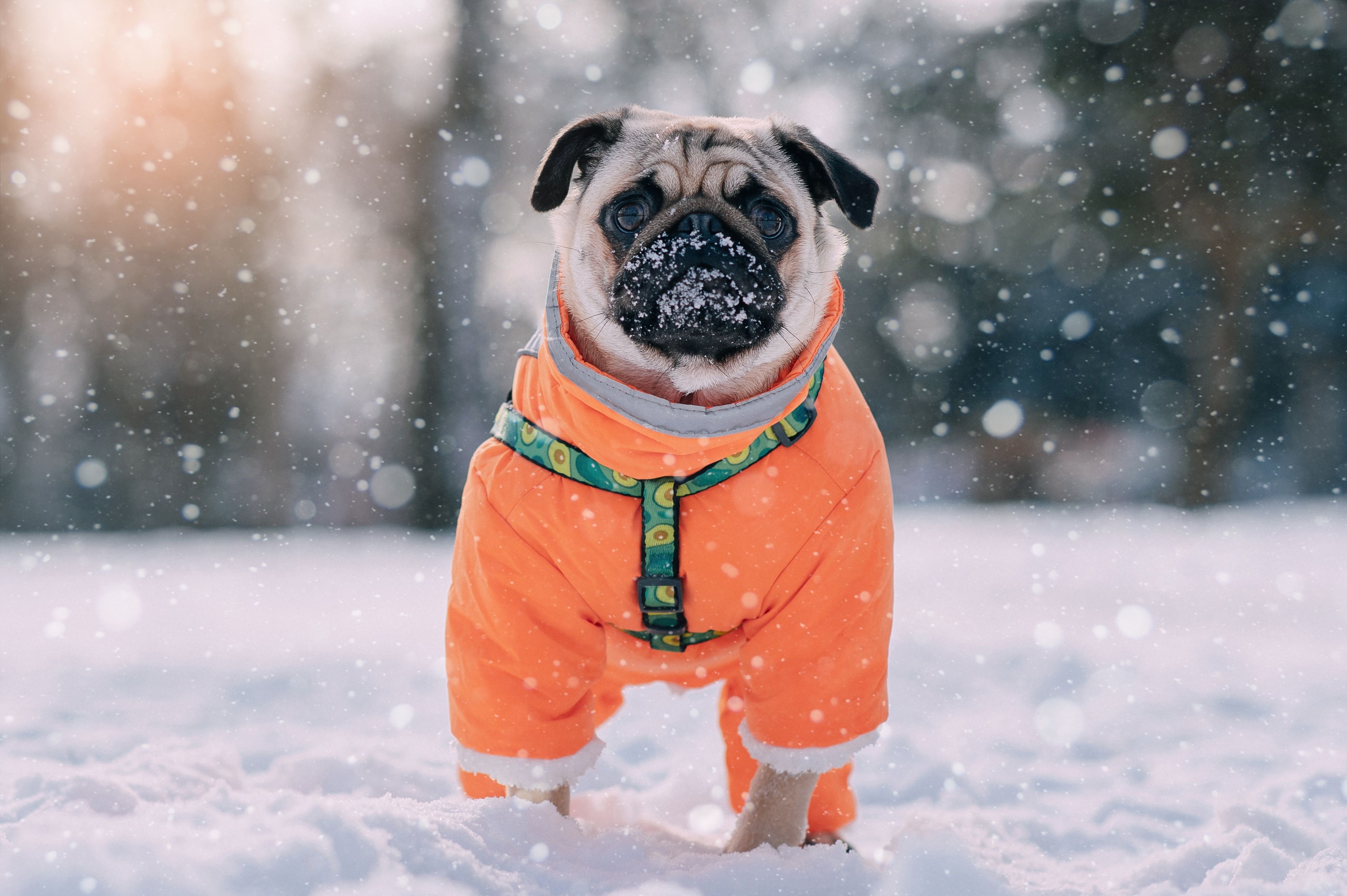
Portrait of a cute warmly dressed pug dog in a winter park.
Dogs, much like humans, have varying levels of tolerance when it comes to cold weather. Factors such as their breed, coat type, size, age, and general health all play a role in how well they can handle winter temperatures. Not every dog is built to thrive in the cold, and in some cases, cold exposure can lead to serious health concerns.
Breed, Size, and Coat Type Matter
Certain dog breeds are naturally more tolerant of cold weather, thanks to their genetics and physical traits. Dogs with thick, double coats, like Huskies and Saint Bernards, are well-suited for freezing temperatures. On the other hand, dogs with thin coats or those from warmer climates, such as Chihuahuas and Greyhounds, may struggle in chilly conditions.
The size of your dog also impacts their ability to handle the cold. Larger dogs tend to fare better in the cold, as they have more body mass to retain heat. Small dogs, on the other hand, are more vulnerable to the elements.
Breeds That Thrive in the Cold
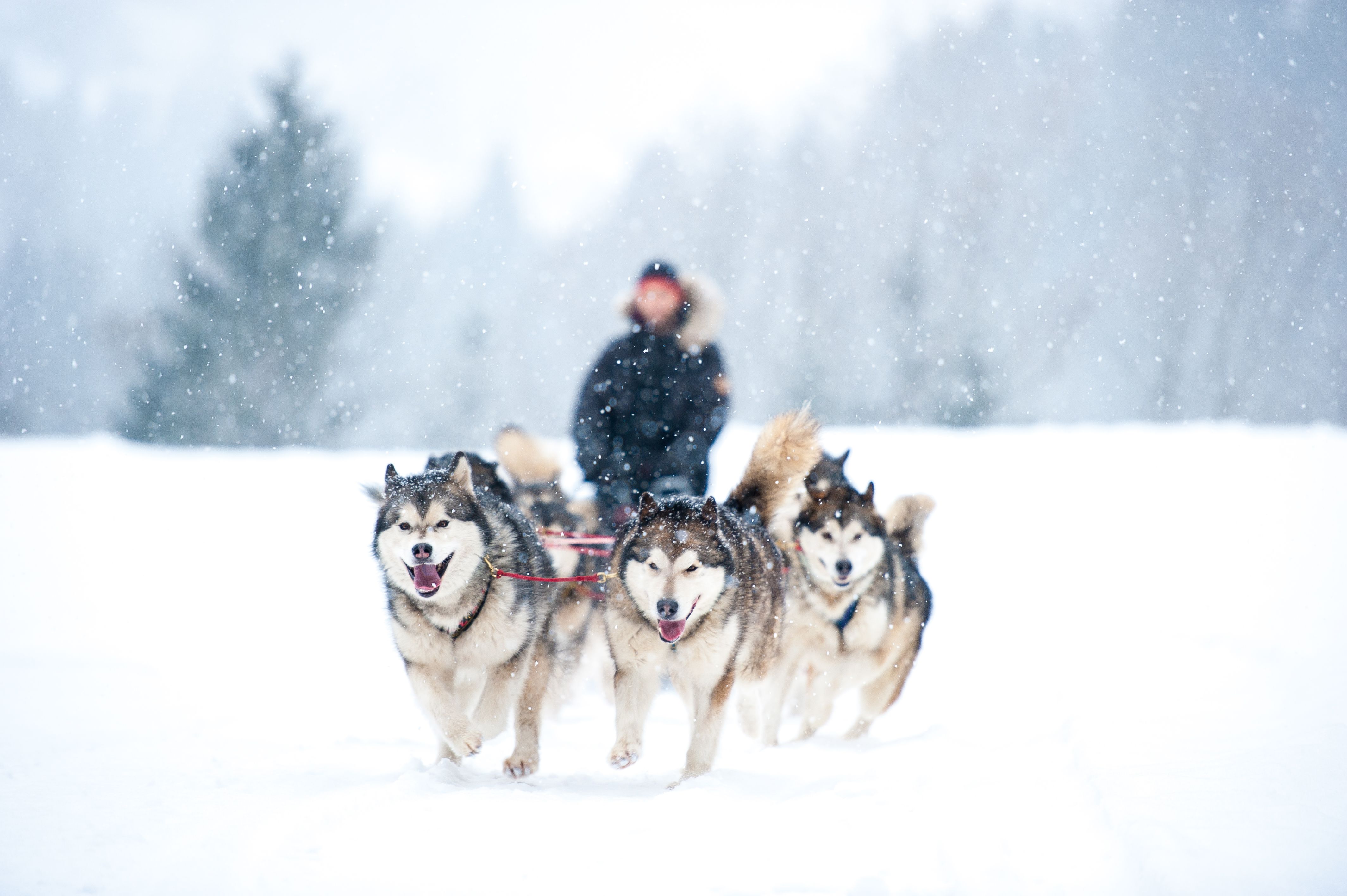
Siberian Huskies pulling dogsled in snow.
Some dogs were practically born for winter. These breeds have evolved to thrive in frigid environments and can comfortably withstand cold temperatures, often without needing any extra protection.
Arctic Breeds
Arctic breeds, including Siberian Huskies, Alaskan Malamutes, and Saint Bernards, were originally bred to work in freezing temperatures. These dogs have thick double coats, insulating layers of fat, and a strong tolerance for the cold. For these breeds, temperatures below freezing are not only tolerable but often enjoyable, especially if they’re used to such conditions.
As long as they have access to shelter that is insulated, windproof, and waterproof—as well as fresh water that isn’t frozen—these hardy dogs can stay outside in temperatures as low as -20°F. Or, even lower for extended periods without risk of injury.
Breeds That Can Handle Short Cold Stints
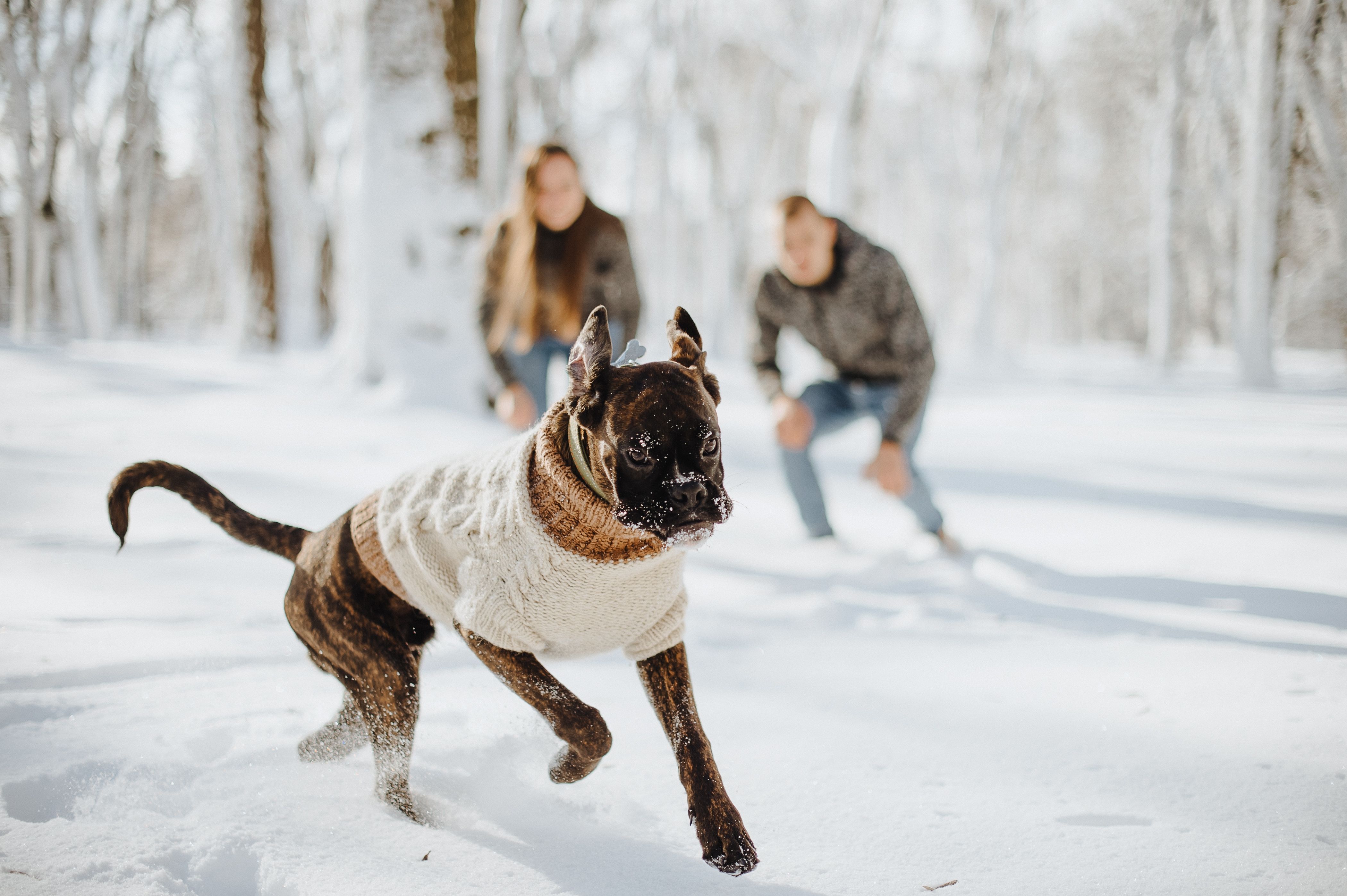
Couple playing with boxer dog in snowy forest
While some dogs love the cold, others can tolerate it for short periods—especially if they’re active.
Medium to Large Active Breeds
Dogs such as Dalmatians, Border Collies, Boxers, and Rottweilers, although not designed for extreme cold, can typically handle brief excursions in subzero temperatures—particularly if they’re playing or exercising. These dogs can comfortably remain outside for up to 30 minutes when running, playing, or exercising in snow.
However, if these dogs are simply standing around or just out to go to the bathroom, it’s best to limit their outdoor time to 5 to 10 minutes. While they have more cold tolerance than smaller dogs, even these active breeds should not be left outside too long when the temperatures dip below zero.
Breeds That Struggle with the Cold
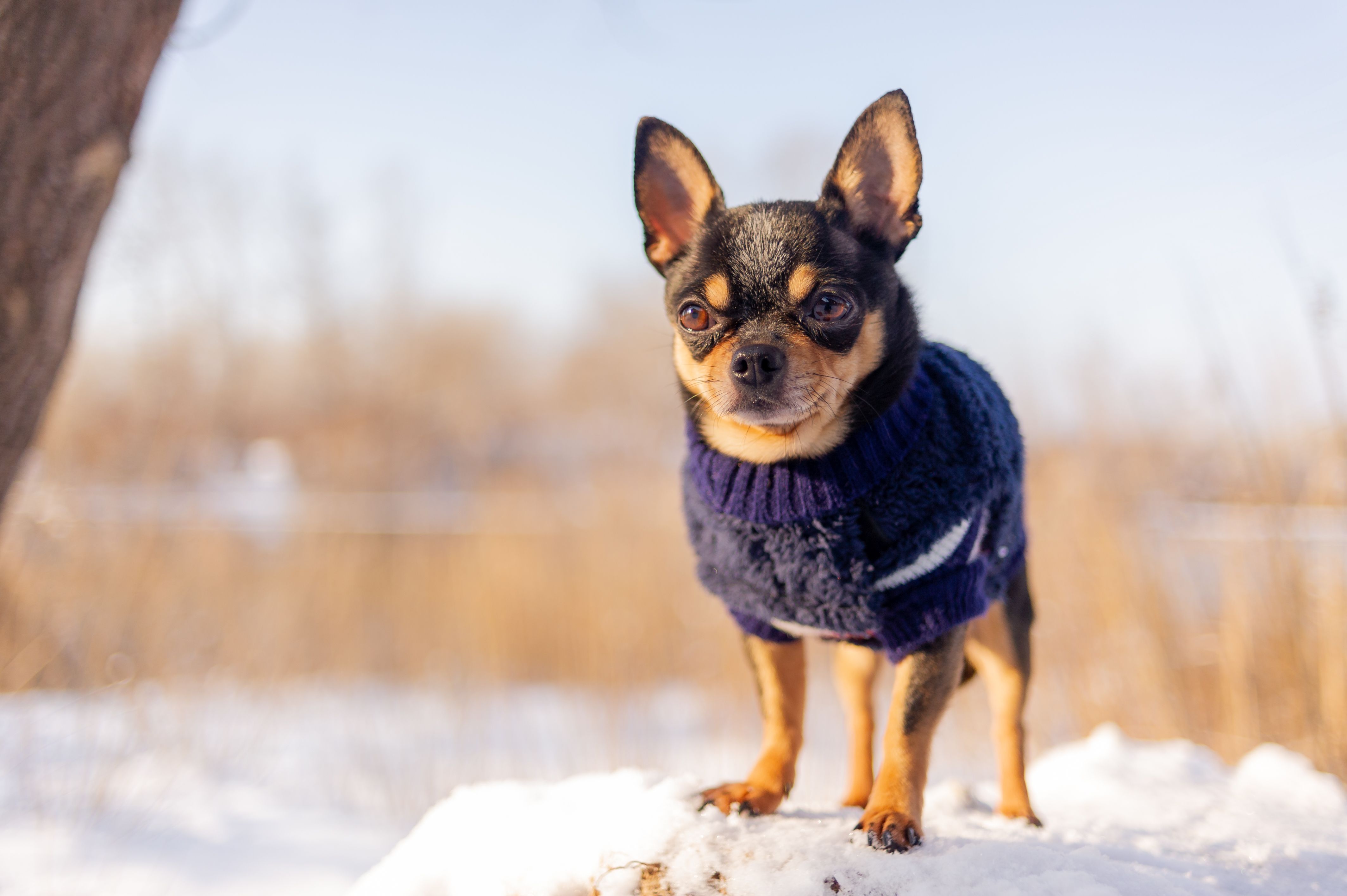
Chihuahua walking in the snow.
For some dogs, the cold is not just uncomfortable—it can be downright dangerous.
Small Breeds and Toy Dogs
Dogs like Chihuahuas, Yorkshire Terriers, Italian Greyhounds, and other small or toy breeds are particularly sensitive to the cold. These dogs have a limited ability to generate body heat and are more susceptible to hypothermia and frostbite.
When the temperature falls between 10°F and 32°F, small breeds should not be outside for longer than 10 to 15 minutes. Any time the temperature drops below 10°F, these dogs should remain indoors. If your small dog refuses to go outside for potty breaks in the snow or cold, it’s often best to use pee pads until the weather warms up.
Puppies and Older Dogs: Extra Caution Needed
Puppies, regardless of breed, are especially vulnerable to cold temperatures. Their bodies are still developing, and they have less fat to help insulate them from the cold. Older dogs may also have a reduced ability to regulate their body temperature due to age-related health problems. For both puppies and seniors, limiting outdoor exposure is key. Keep a close eye on them when they’re outside, and be quick to bring them indoors if they show signs of discomfort or distress.
Recognizing the Signs of Cold-Related Health Issues
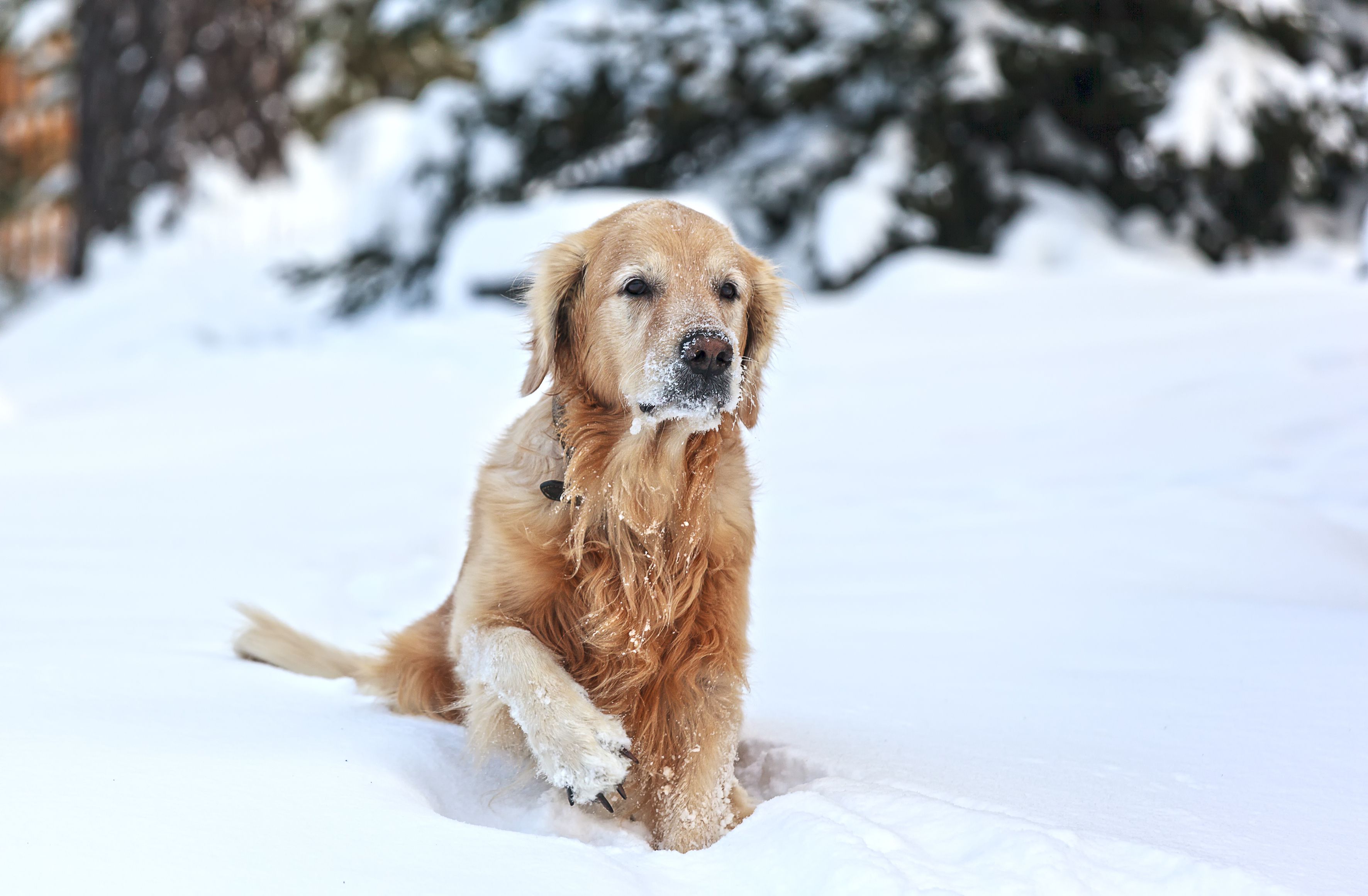
Golden Retriever lifts cold paw from snow.
It’s important to be aware of how your dog reacts to the cold. Prolonged exposure to freezing temperatures can lead to serious health issues like hypothermia and frostbite. Here’s how to recognize the signs:
Hypothermia
Hypothermia occurs when your dog’s body temperature drops too low. In the early stages, the most obvious sign is shivering. You might also notice your dog looking tired, sluggish, or huddling by the door to get inside. Dogs with hypothermia may also show signs of confusion or difficulty walking. If you suspect hypothermia, bring your dog inside immediately, wrap them in warm towels, and monitor them closely.
Frostbite
Frostbite is another serious concern in freezing temperatures, especially for dogs with sensitive areas such as their paws, ears, and tails. Early signs of frostbite include pale, cold skin and swelling. Dogs may raise one or more paws if they’re in pain, and frostbite areas may turn red or blue.
If you notice signs of frostbite, don’t rub the affected areas, as this can cause further damage. Instead, apply a warm, damp compress and contact your veterinarian as soon as possible.
How Winter Coats Help
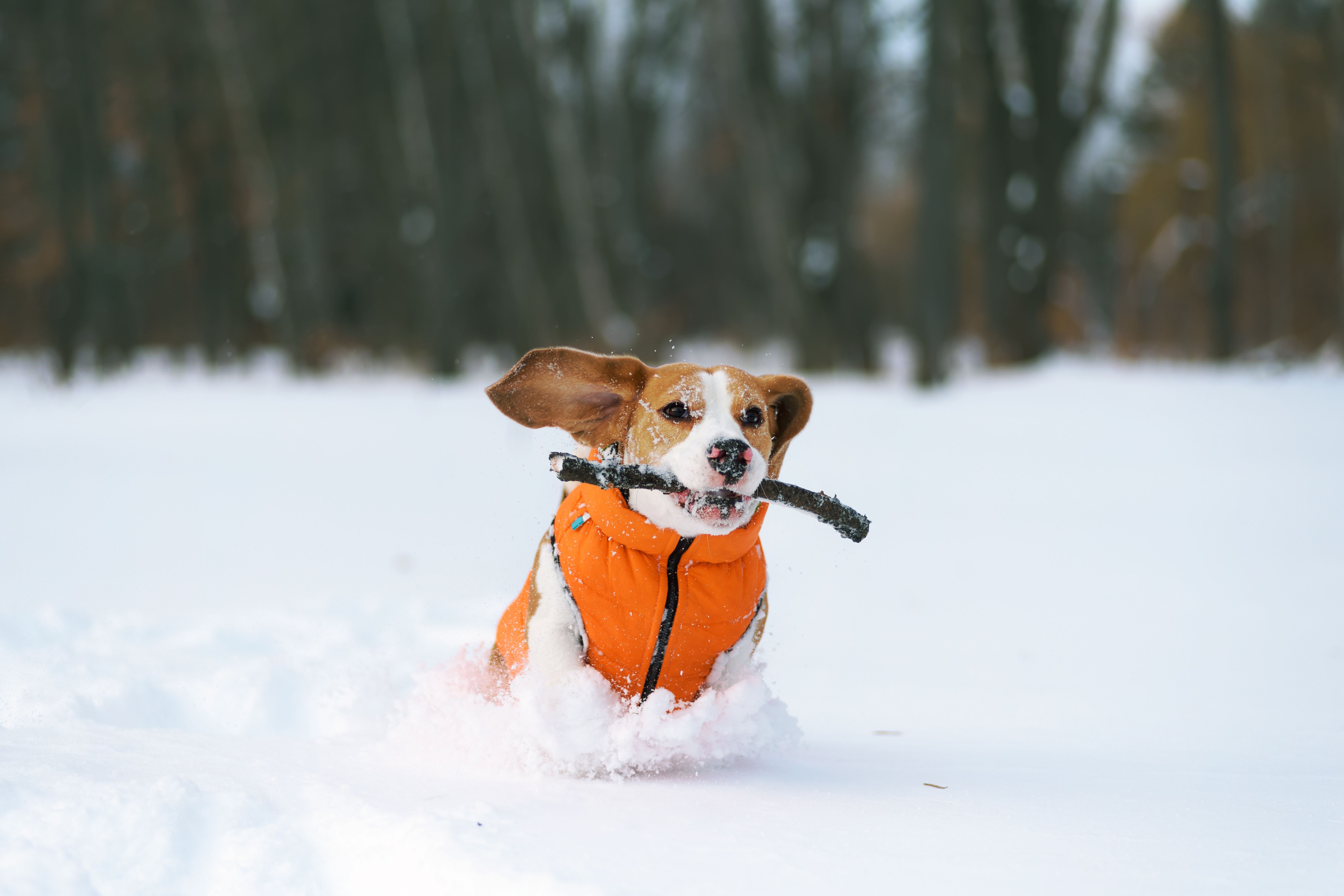
Beagle hound wearing cold protective dog jacket running through the snowdrifts to fetch the stick.
When it comes to protecting your dog in cold weather, a well-fitting winter coat can make a world of difference. Coats not only help insulate your dog’s body, but they also protect against wind and moisture, which can significantly lower body temperature.
Coats for Short-Haired Dogs
Short-haired dogs are the most likely to benefit from a winter coat. These breeds, like Greyhounds, Boxers, and French Bulldogs, should wear coats when the temperature falls below freezing. A good coat can help them stay warm while they’re outside for brief potty breaks or some light play.
Coats for Small or Older Dogs
Small dogs and senior dogs, regardless of coat type, may benefit from a coat, especially if they’re prone to shivering. Even if your dog has a thick coat, if they are small, young, or elderly, a coat can provide added warmth and comfort.
Coats for Active Dogs
If your dog is running or playing actively, they may not need a coat, as their exercise will help keep them warm. However, for medium or large breeds that aren’t as active, or if they’re standing around for long periods, adding a coat can help prevent cold-related discomfort.
Tips for Keeping Your Dog Safe and Warm
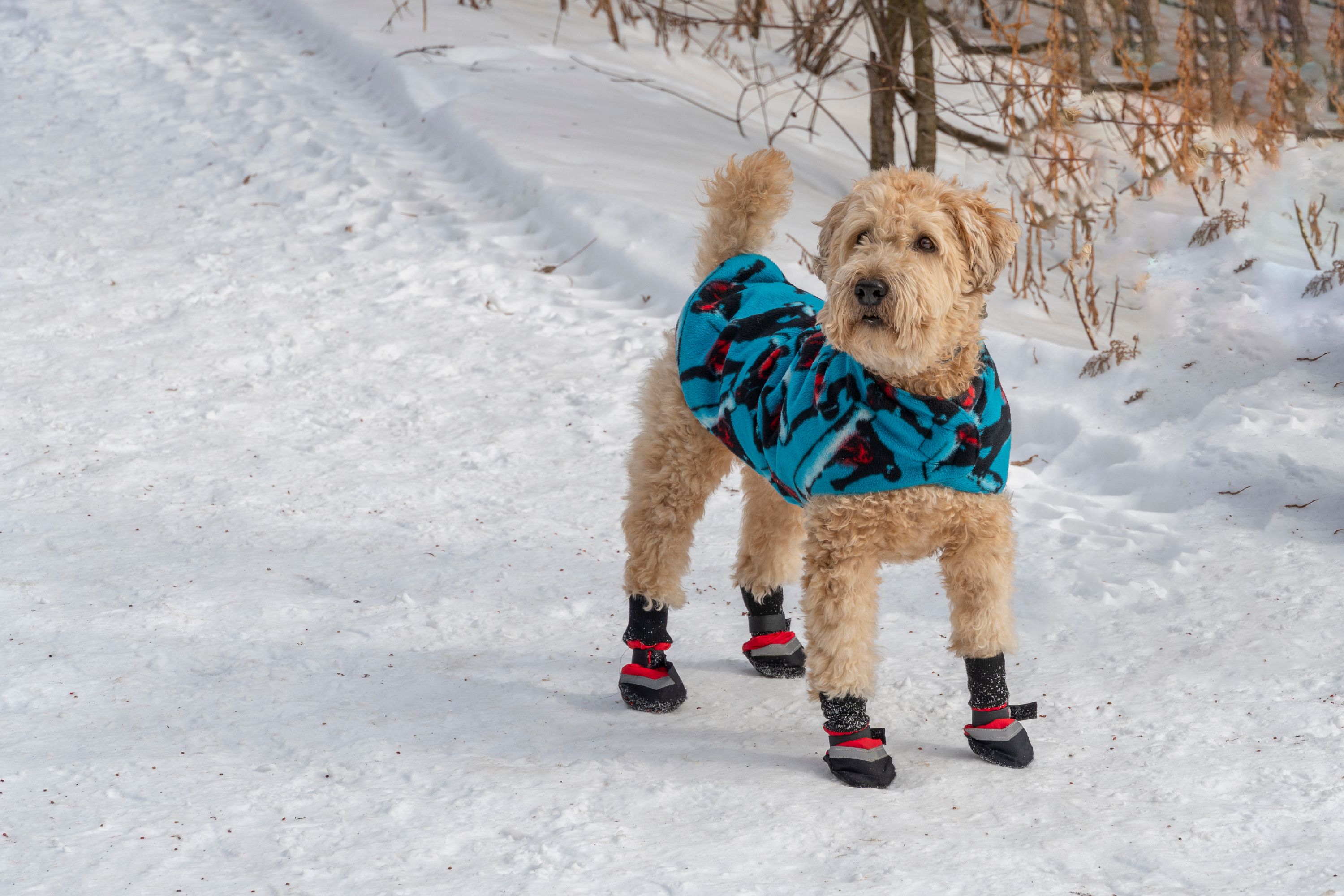
A dog dressed in a warm cape and red boots stands on a snow-covered path near the fence.
- Limit Time Outdoors: Pay attention to how your dog reacts to the cold. If they seem uncomfortable, bring them inside right away.
- Provide Shelter: If your dog spends extended time outdoors, ensure they have access to a warm, dry shelter that protects them from wind and moisture.
- Use Booties: Snow and ice can be rough on your dog’s paws, so consider investing in dog booties to protect their paws from salt, ice, and cold surfaces.
- Stay Dry: Wet dogs lose heat much faster than dry dogs. If your dog gets wet from snow or rain, dry them off immediately when they come inside.
- Hydrate: Make sure your dog has access to fresh water, even when it’s cold outside. Dehydration can still occur in winter, especially if your dog is playing in the snow.
Final Thoughts: Trust Your Instincts
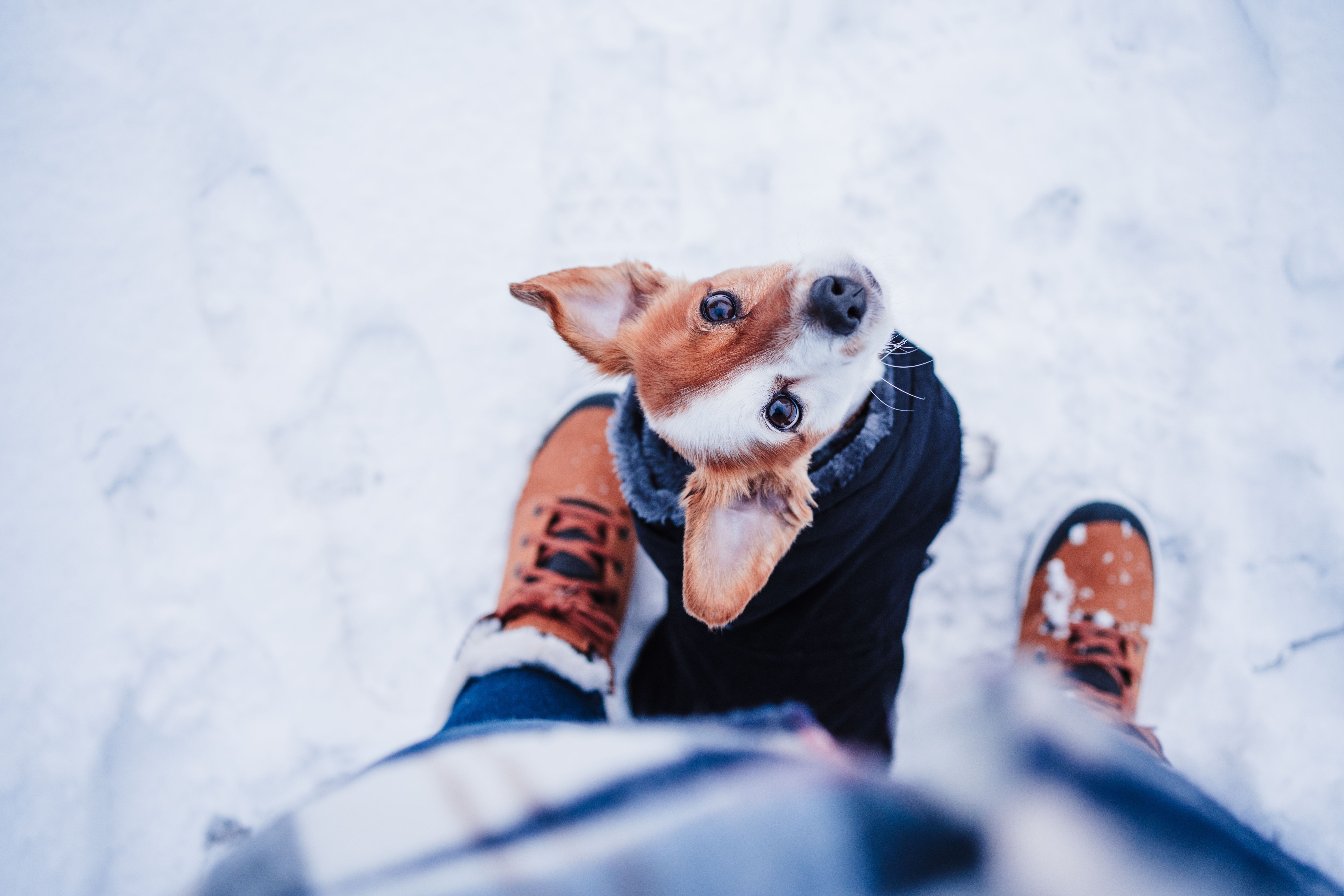
Cute jack russell dog wearing coat standing by owner on snowy landscape.
Ultimately, when it comes to determining whether it’s too cold for your dog to go outside, trust your instincts. Keep an eye on the weather, monitor your dog’s behavior, and adjust their outdoor time based on their breed, size, age, and overall health. Whether you’re preparing for a winter adventure or just a quick potty break, ensuring your dog stays safe and comfortable during the winter months is the most important thing. With the right precautions, you and your dog can enjoy the colder months together—safely and warmly.

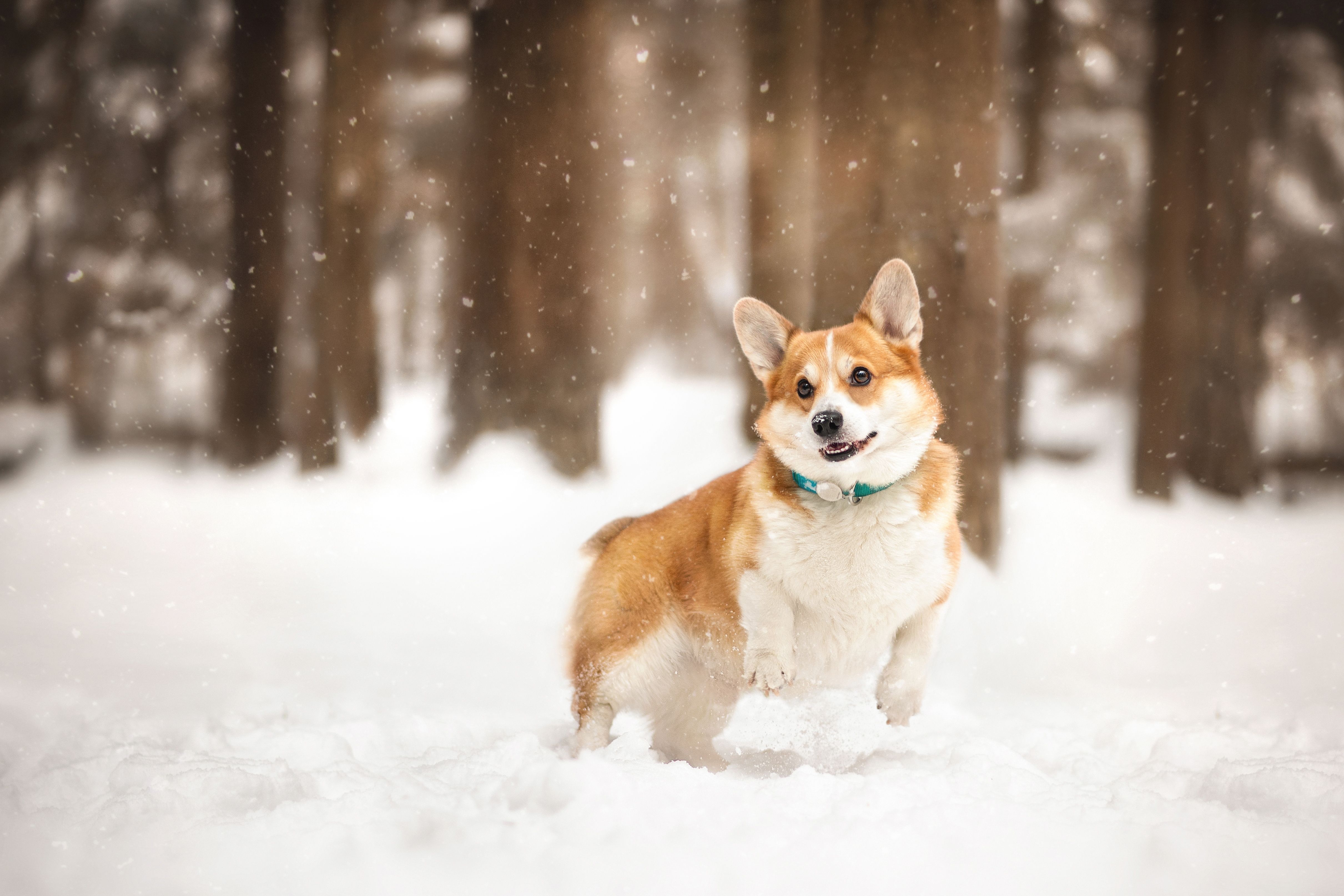





Leave A Comment